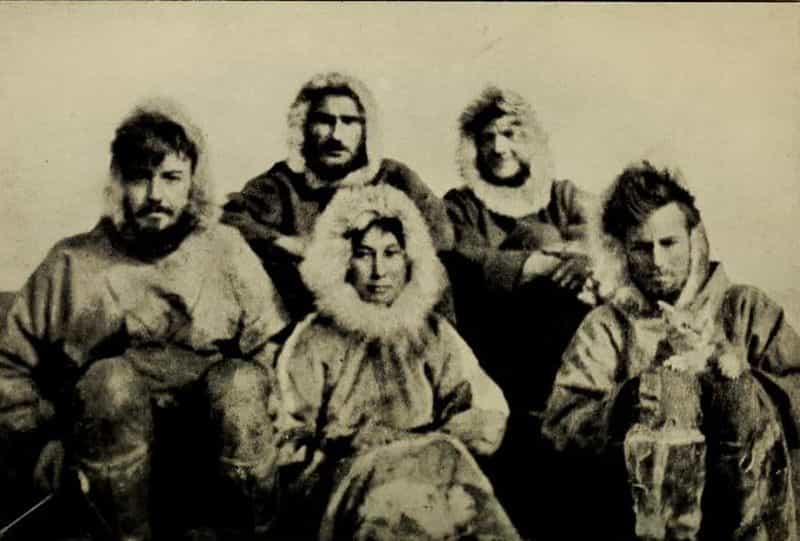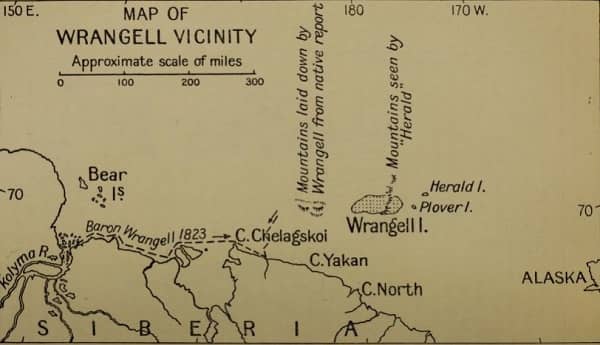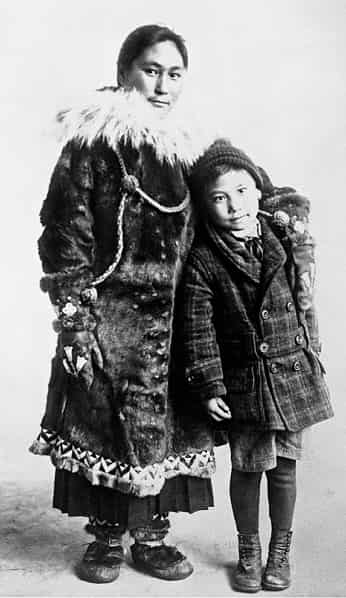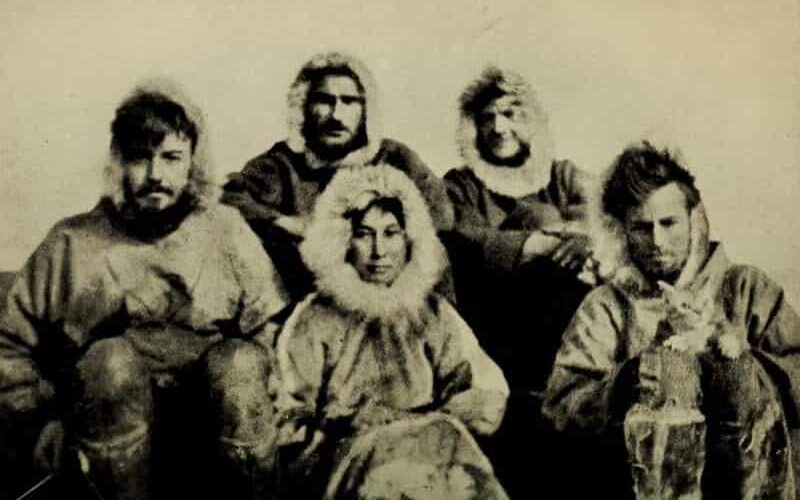Ada Blackjack: The Forgotten Survivor of a Strange Arctic Expedition

In the 1920s, Ada Blackjack spent nearly two years on a cold, icy island in the Arctic, and she became a true survivor.
In 1921, Ada Blackjack was a 23-year-old woman from Alaska who sailed to a small island far north of Siberia. At first, she was not expected to be the hero of the story. Ada, who was Inupiat, worked as a seamstress for a group of men on an expedition. She was hired to help make clothes and gear for their journey, and she was promised that her job would be easy. She would only need to sew, and she wouldn’t have to do the hard work of survival in the Arctic. She thought she would stay on the island for about a year, and during that time, she would be fed and taken care of.
However, nearly two years later, Ada was the only member of the group still alive when help finally arrived. She had survived the harsh conditions of Wrangel Island by learning how to hunt and trap animals. When she was rescued, she wore a beautiful reindeer parka she had made herself. She looked thin and tired, but she smiled triumphantly. She was a hero in her own right.

Ada Blackjack, born Ada Deletuk, grew up in Alaska in 1898, in a small town called Spruce Creek. This town was far north of the Arctic Circle, near Nome, a place that became famous during the gold rush. Ada was part of the Inupiat people, but she did not learn how to hunt or live in the wilderness as other members of her community did. Instead, she was raised by missionaries who taught her English and how to do housework, cook, and sew.
When Ada was 16, she married a man named Jack Blackjack, a local dog musher. Together, they had three children, but two of them died. Jack left Ada in 1921, and Ada was forced to walk 40 miles back to Nome with her young son, Bennett, who was weak and sick. Bennett had tuberculosis, and Ada did not have the money or resources to help him. When they arrived in Nome, Ada had to place Bennett in an orphanage because she couldn’t care for him. She promised that she would work hard to make enough money to bring him home.

One day, Ada heard about an expedition going to Wrangel Island. They were looking for an Indigenous Alaskan seamstress who could speak English. The leader of the expedition was Vilhjalmur Stefansson, a well-known explorer. Stefansson wanted to claim Wrangel Island for Britain, even though Britain had no interest in it. He gathered a group of four young men and sent them to the island. However, Stefansson didn’t plan to go with them himself. He only gave the group six months’ worth of supplies, and he promised them that the Arctic would provide enough food to survive.
Ada was unsure about joining the expedition. At first, she had been told that there would be other Indigenous Alaskans with her, but they all changed their minds and left. Ada needed money to bring Bennett home, so she decided to go. She was promised $50 a month for the job, which was a lot of money at the time. On September 9, 1921, Ada boarded the ship Silver Wave with the four men and a cat named Victoria.
At first, the island seemed like a good place. There was enough food, and the weather was manageable. But as time passed, the animals started to disappear, and the ice began to form around the island. The ship that was supposed to pick them up never came because the ice was too thick for the ship to pass through. The group realized they would have to survive on the island for another year, and their supplies were running low.
By January 1923, things were looking very bad. The group was starving, and one of the men, Lorne Knight, became very sick. On January 28, 1923, three of the men decided to leave Ada and Knight behind and walk across the ice to Siberia, hoping to find help. They never returned.
Ada was left alone with Knight, who was very sick and close to dying. For six months, Ada took care of him. She did everything she could: she hunted, cooked, and even cared for him like a nurse. Despite her best efforts, Knight blamed her for not doing more. Ada was hurt by his words but kept her focus on survival. In her diary, she wrote about the difficulties of doing everything alone.
When Knight passed away, Ada did not let his death stop her. She couldn’t bury his body, so she protected it from animals by building a barrier of boxes around it. Ada then focused on survival. She learned how to trap animals like foxes, and she hunted birds. She even made a boat from the wood and canvas she found on the island. She built a platform to watch for polar bears and kept a gun ready to protect herself.
Ada stayed on the island alone for three more months. She kept herself busy with tasks to survive. On August 20, 1923, nearly two years after she arrived, a ship called Donaldson came to rescue her. Ada had survived on her own. She was strong and determined, and when the crew found her, they were impressed by how well she had lived on the island. They said she could have survived for another year, though it would have been a lonely and difficult experience.
When Ada returned to the mainland, she was hailed as a hero. She became famous for her courage and her ability to survive in the Arctic. But Ada didn’t care about fame. She was just a mother who wanted to return to her son, Bennett.
Ada was reunited with Bennett and used the money she had earned to get him treatment for his tuberculosis. She later had another son, Billy, and returned to Alaska to live with her family. However, despite this new chapter in her life, Ada faced many difficulties. She lived in poverty, and her story was often misunderstood. Some people spread rumors about her, saying that she had not cared for Knight properly. She never received any money from the fame of the expedition, even though others made money by telling her story.
Bennett’s health continued to be a problem, and he passed away in 1972. Ada followed her son in 1983, when she died at the age of 85. She was buried next to Bennett.
Frequently Asked Questions (FAQ) about Ada Blackjack:
1. Who was Ada Blackjack?
Ada Blackjack was an Inupiat woman from Alaska who became famous for surviving alone on Wrangel Island in the Arctic in the early 1920s. She was the only survivor of an ill-fated expedition and was later known as “The Female Robinson Crusoe” for her remarkable survival skills.
2. Why did Ada Blackjack go on the Arctic expedition?
Ada Blackjack joined the expedition to Wrangel Island in 1921 as a seamstress to make money so she could bring her sick son, Bennett, back home. She was promised a salary of $50 a month, which was a large amount at the time. She was initially hired to help with sewing and housekeeping, but the conditions on the island soon became much harsher than expected.
3. How did Ada Blackjack survive on Wrangel Island?
After the expedition members were stranded on Wrangel Island and help did not arrive, Ada Blackjack used her skills and determination to survive. She learned to trap animals, hunt birds, and even built a skin boat. She also took care of a sick expedition member, Lorne Knight, until his death, and protected his body from wild animals. Ada spent months on her own, using the resources available to her.
4. What happened to the other members of the expedition?
Three men from the expedition—Allan Crawford, Fred Maurer, and Milton Galle—decided to leave Ada and the sick Lorne Knight behind and walk across the ice to Siberia for help. They were never seen again. Lorne Knight later died from his illness, leaving Ada alone on the island.
5. How long did Ada Blackjack stay on Wrangel Island?
Ada Blackjack stayed on Wrangel Island for nearly two years. She arrived in 1921 and was rescued in August 1923, almost two years after she first arrived. She was the only surviving member of the expedition when help finally came.
6. How was Ada Blackjack rescued?
Ada Blackjack was rescued on August 20, 1923, by a ship called Donaldson. The crew was surprised to find her alive, as they had expected her to be dead after so much time in isolation. Ada had survived on her own by mastering survival skills, such as hunting, trapping, and building shelter.
7. What happened to Ada Blackjack after she was rescued?
After her rescue, Ada Blackjack returned to Alaska and was reunited with her son, Bennett. She used her earnings from the expedition to seek medical treatment for Bennett’s tuberculosis. Ada later had another son, Billy, and lived in Alaska for the rest of her life, but she faced financial hardship and lived in poverty.
8. Was Ada Blackjack rewarded for her survival story?
Though Ada Blackjack became a hero in the press after her rescue, she did not receive any money from the fame of her story. Others profited from telling the story of the expedition, but Ada was not compensated for her part in it. She faced smear campaigns and was sometimes criticized for not caring for Lorne Knight better, though these claims were unfounded.
9. What happened to Ada Blackjack’s son, Bennett?
Bennett, Ada’s son, struggled with his health throughout his life. Despite Ada’s efforts to get him treatment for tuberculosis, Bennett passed away in 1972 at the age of 58. Ada lived for another decade and died in 1983.
10. Where is Ada Blackjack buried?
Ada Blackjack passed away in a nursing home in Palmer, Alaska, at the age of 85. She was buried next to her son, Bennett.

